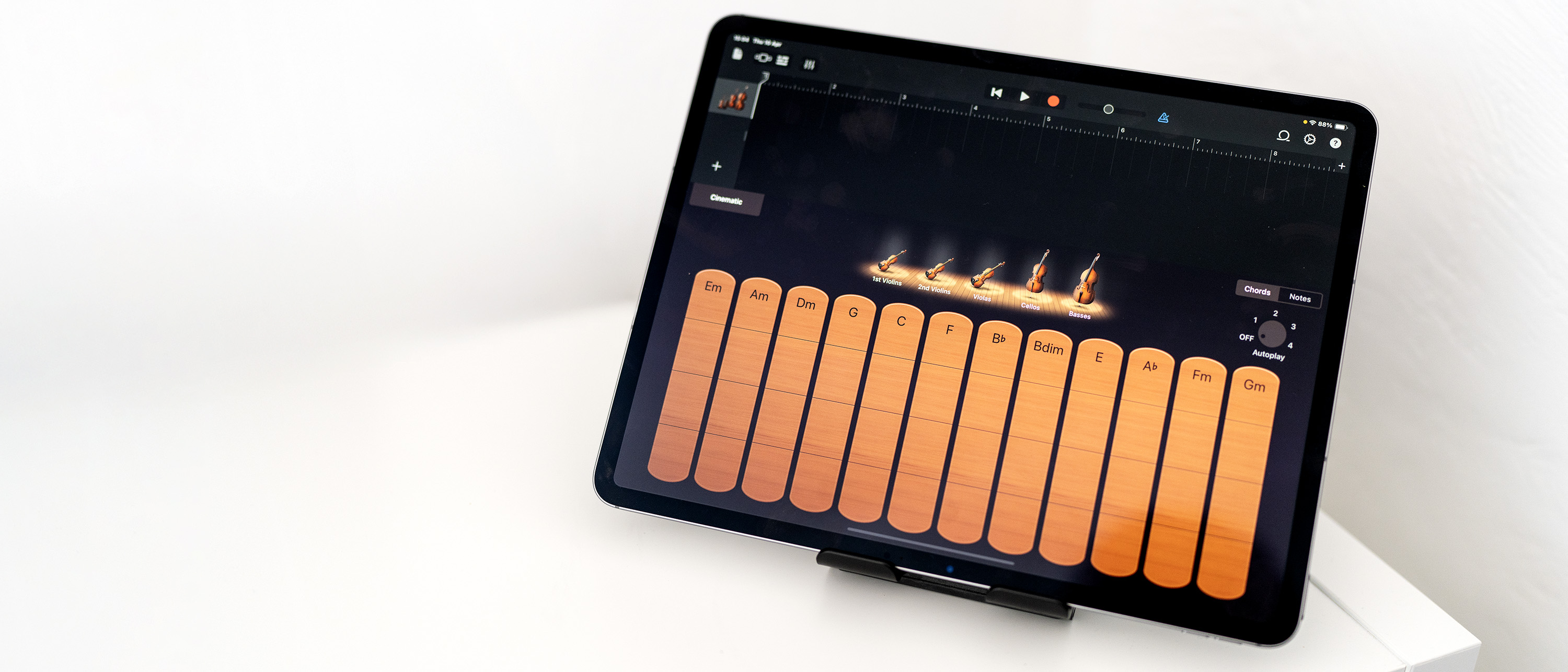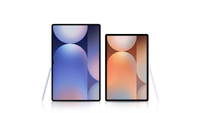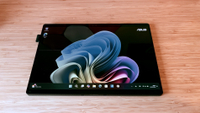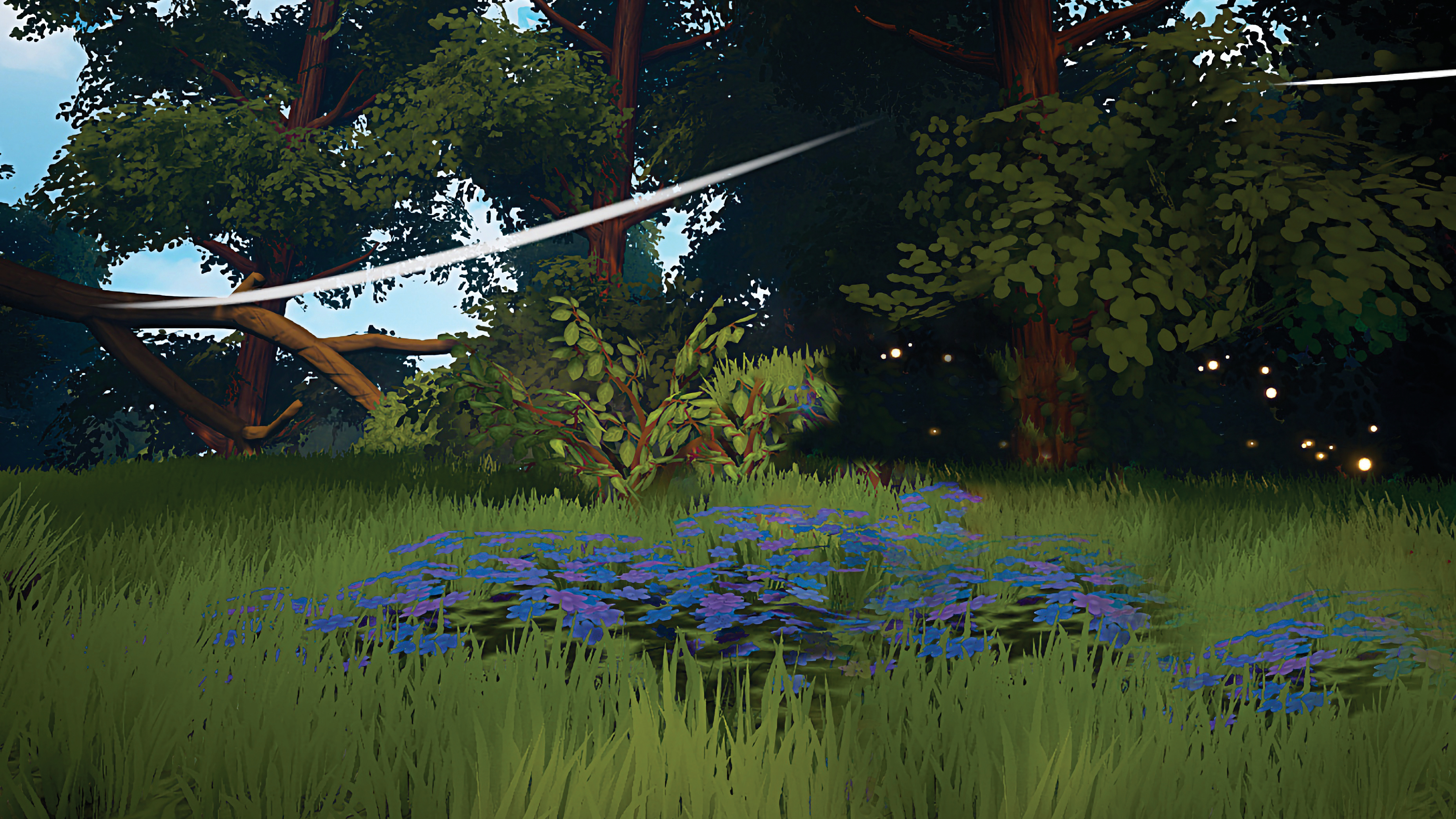Our Verdict
The iPad Air M3 is an iPad Pro in all but name, and is compatible with both the Apple Pencil Pro and its non-Pro sibling. It’s supremely versatile, able to act as a laptop replacement for when you need to do office work, and a sketching pad when you don’t. It runs pro-level apps, though the selection is a bit limited, and though iPadOS has its shortcomings compared to a full-blown Mac, if you can work around them it makes an ideal everyday companion.
For
- A high-performance tablet
- Lots of creative apps
- Keyboard and Pencil round it out
Against
- Gets expensive
- iPadOS still has its limitations
- Only one USB port
Why you can trust Creative Bloq
The 2025 edition of the iPad Air, in its 13-inch incarnation at least, feels like an iPad Pro. It has the same flat sides, heft in the hand, and speaker grilles that Pac-Man would gobble up as the M1 monster that brought desktop-class chips to tablets, but instead sports an M3. The extra processing grunt means apps like Affinity Photo and the iPad versions of Photoshop and DaVinci Resolve absolutely fly, and the Apple Pencil Pro makes it ideal for sketching too. There's a keyboard case that turns it into a kind of laptop, and the USB-C port means there's no scrabbling around for a compatible charger. It’s not cheap, but with its surprisingly reasonable starting price (though you're going to want to upgrade the base specs, which gets expensive fast), this might be the best tablet for creatives right now – and it's certainly winging its way to the best iPad for drawing guide.
Key specifications
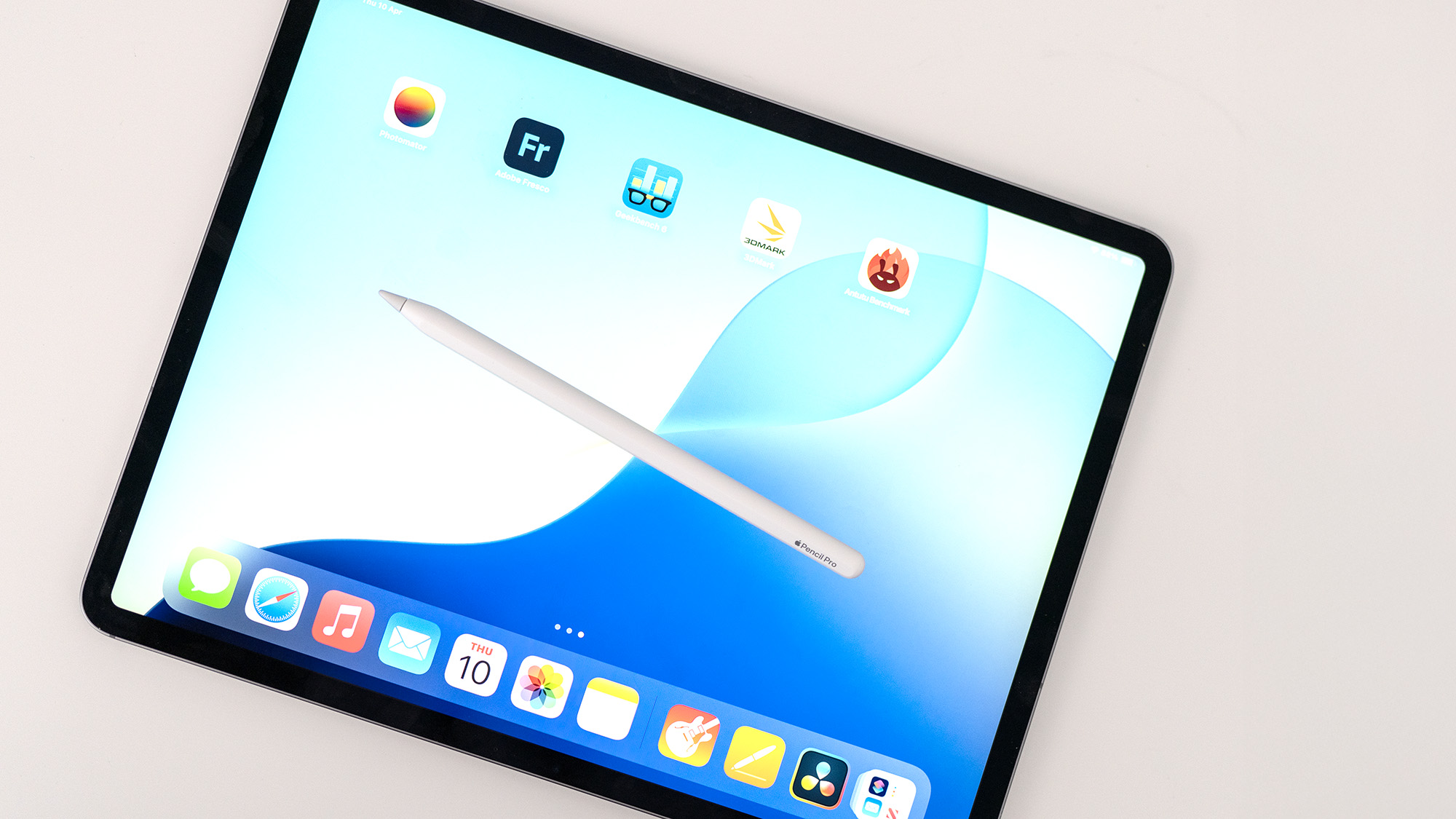
CPU: | Apple M3 |
NPU: | 16-core Neural Engine |
Graphics: | Integrated, nine cores |
Memory: | 8GB |
Storage: | 128GB - 1TB |
Screen size: | 11 or 13in (version tested) |
Screen type: | LED-backlit IPS touchscreen |
Resolution: | 2,732 x 2,048 (version tested) |
Refresh rate: | 60Hz |
Colour gamut (claimed): | P3 wide colour |
Brightness (claimed): | 600 nits |
Ports: | 1x USB-C (10Gbps) |
Wireless connectivity: | Wi-Fi 6E, Bluetooth 5.3, 5G eSIM (optional) |
Dimensions: | 281 x 215 x 6mm (13in model) |
Weight: | 616 grams (version tested) |
Design, build and display

Apple makes great tablets. There's no need to say anything else. The 2025 edition of the iPad Air retains the design of the 2024 model, with flat sides and rounded corners. The back has lost the ‘iPad’ wordmark but the Apple logo remains, and there's a single camera lens to mark the Air out from the better-endowed Pro, but they share the three-dot connector for the Magic Keyboard on the back.
It’s a very restrained design, with all the attention focused instead on the screen. As your main way of interacting with a tablet, this is to be expected, and the rest of the iPAd fades into the background when you’re engrossed in the display. The edges of the iPad Air are broken by the little plastic sections that denote the points at which antennas pass through the metal to get a better signal, and there are four speakers split between top and bottom. The USB-C port sits where you’d expect it to, and there are the usual volume rocker and lock buttons too, the latter doubling as a fingerprint reader.
The 12in iPad Air is lighter than a laptop but heavier than some other tablets - though it is quite large, which immediately means it will weigh more, and will require a bag that can fit a thin and light laptop to carry with you. Apple doesn’t say what the glass covering the touchscreen is, but the entire build feels stiff and assured in the hand, though there's no IP rating, so it might be best to keep it dry and clean.
• Sturdy design
• Nothing new
Design score: 4/5
Features
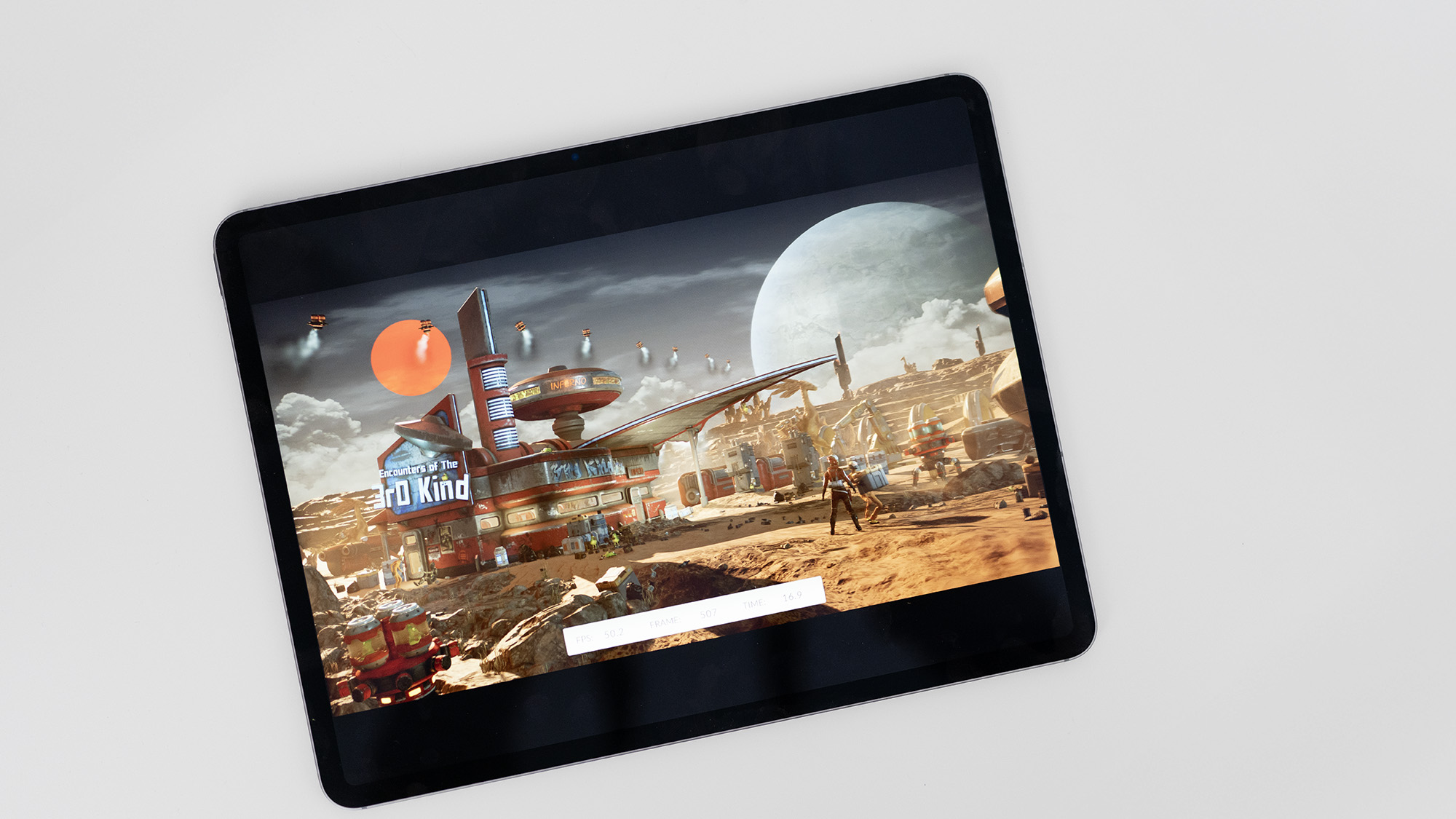
Most of the iPad Air’s features are software-based, as the tablet itself is bare apart from a single USB-C port that’s not a Thunderbolt. It doesn’t have Face ID for unlocking, relying instead on Touch ID through the lock button, and there's only a single wide-angle camera lens on the back.
It’s not all doom and gloom, however. All of these things are perfectly acceptable on a tablet - the USB-C port still does video out, and 10Gbps is fast enough for all but the highest resolution images and video files. Using a tablet to take photos is a sub-optimal experience at best, and so extra tele and ultrawide lenses will be largely redundant.
The iPad Air is compatible with Apple’s Magic Keyboard and both types of Apple Pencil - the Pro model introduces a new twist sensor and a squeeze gesture to make quick changes, as well as having customisable haptic feedback, but costs £50 more. The Magic Keyboard sports a trackpad so it’s possible to use the iPad more like a laptop, and iPadOS has features like Stage Manager to make use of external monitors.
The OS itself has improved since it split from iOS. Apple Intelligence is now built in, and of course you get Siri voice control and iCloud for your documents. It still feels like working on an oversized phone rather than a desktop OS, however, which may put some off, but if you’re prepared to operate within its constraints it can do almost anything a laptop can.
• OS improvements
• Only one USB port
Feature score: 3/5
Benchmark scores
| Header Cell - Column 0 | Header Cell - Column 1 | Apple iPad Air M3 |
|---|---|---|
GEEKBENCH 6 | CPU Single-core: | 3029 |
| Row 1 - Cell 0 | CPU Multi-core: | 11888 |
| Row 2 - Cell 0 | GPU Metal: | 46023 |
3D Mark | Steel Nomad Light: | 2623, 19.4fps |
| Row 4 - Cell 0 | Wild Life Extreme: | 5638, 33.8fps |
| Row 5 - Cell 0 | Solar Bay: | 9594, 36.5 fps |
Performance

The M3 was an excellent chip when we first reviewed it in a MacBook Air back in 2024, and it remains so now. The iPad Pro may have made the leap up to M4, but it also costs twice as much.
In 3D Mark’s Steel Nomad, a graphics test for high-end mobile devices that scales its 1440p action to the native screen resolution and looks like a modern console game, the M3 Air managed a sliver under 20 FPS, which is just about a playable framerate but not exactly smooth - if scores can be compared across platforms, then the M3 iPad does worse than a PC with a GeForce GTX 1650 card in it. The same is true in Wild Life Extreme, a 4K benchmark that is considered too heavy for most phones and tablets, so the Air is doing well to get 33 FPS on average.
In the Geekbench tests, the Air’s score in the multi-core benchmark is just slightly below that of an AMD Ryzen 9 5900X, a 12-core desktop processor from 2020. That’s an excellent result for a tablet. As a better comparison, an M1 version of the iPad Pro we had laying around the office scored 3,000 points less than the M3 iPad Air in the multi-core CPU test, a difference of almost 30%.
So we’re looking at an excellent processor, that’s slightly weak in the GPU area but no more than most chips that use integrated graphics. The problem with iPadOS for creatives is the software: you’ve got versions (with missing features) of Photoshop, Lightroom and Illustrator, plus the full Affinity suite, DaVinci Resolve, Procreate, Sketchup, Nomad Sculpt, Pixelmator Pro and more, along with GarageBand and Logic Pro. If those are good enough for you, or you’re prepared to learn something new, then Apple has made a productivity powerhouse. If not, then a traditional laptop may be more appealing.
Battery life is tricky to evaluate on a tablet, as none of the standardised tests we usually use are available, but Apple claims 10 hours of endurance out of a charge, and that feels a little high but not too far off the mark. It will last all day, but the battery life is down compared to the M1 and M2 models.
• Desktop-class performance
• Software limitations
Performance score: 5/5
Price
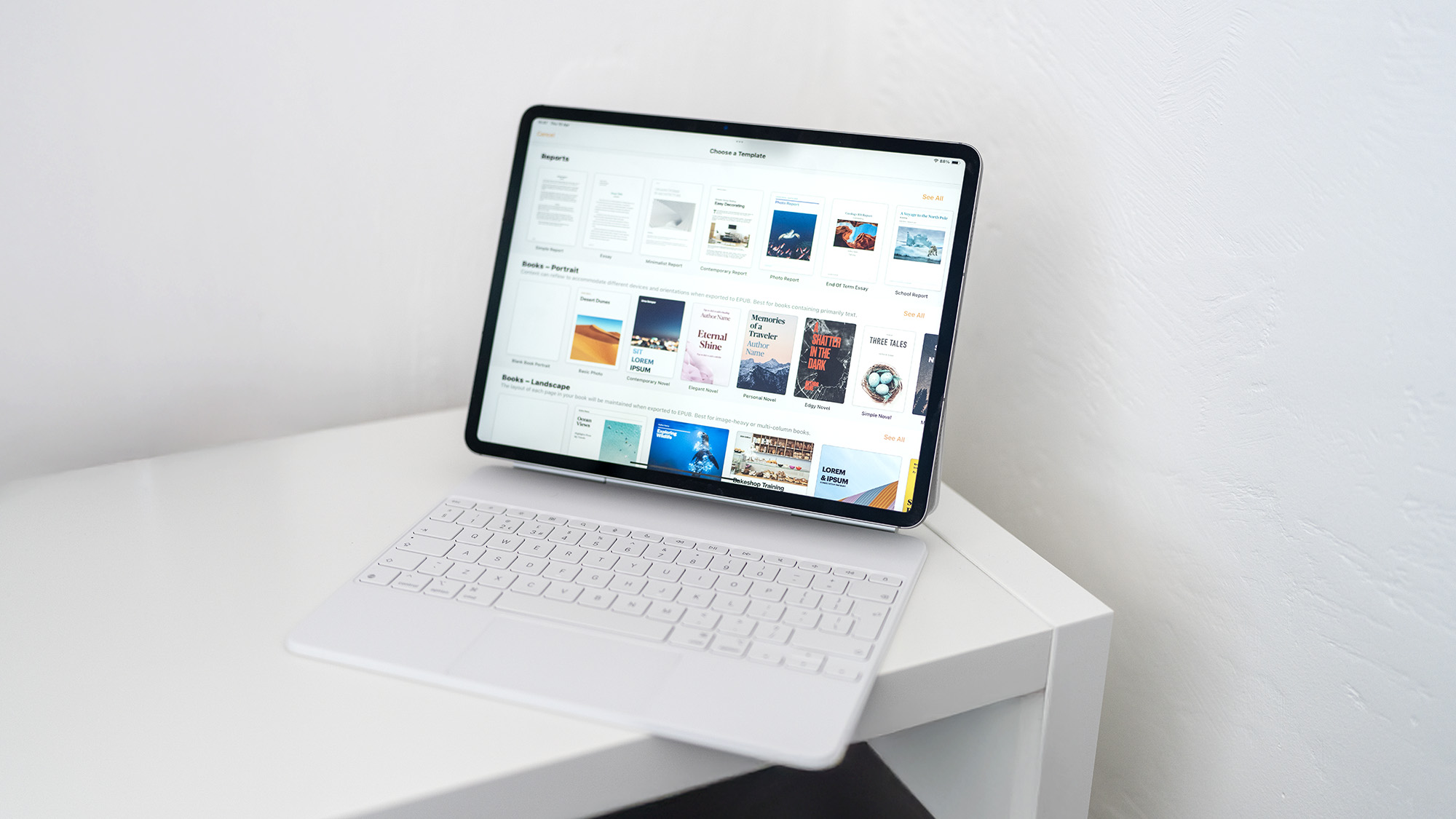
The iPad Air base price is deceptive. £799 for the 13in sounds like a good deal for a tablet of this quality, but once you’ve added the Apple Pencil Pro and Magic Keyboard it’s suddenly £1,098. Then as you upgrade the storage, the price climbs even higher. You could buy the base model 13in MacBook Air M4 for £999, and have more RAM, twice the storage, and £100 back in your pocket, though the laptop doesn’t come with a touchscreen. Meanwhile, the Samsung Galaxy Tab S10 Ultra costs a lot more. It means that the iPad can be a tricky recommendation - they make truly excellent creative machines, but the price can be somewhat daunting.
Value score: 3/5
Who is it for?
• Creatives and students
The iPad Air is hugely versatile, able to be used for sketching as well as word processing and everything in between. Having just one USB port is a definite limitation, so you will need a hub if you’re doing serious work on it, but the possibilities are endless. With a desktop-class CPU at its heart, you’ll never feel slowed down, and with excellent battery life the Air is a great choice for a main or backup machine.
Attributes | Notes | Rating |
|---|---|---|
Design: | Looks like an iPad - it's functional, but a bit dull | 4/5 |
Features: | Only one USB port, but some good accessories available. | 3/5 |
Performance: | Just excellent, the most powerful tablet you can get (apart from the iPad Pro) | 5/5 |
Value: | Starts off well, but gets expensive as you add options. | 3/5 |
Buy it if...
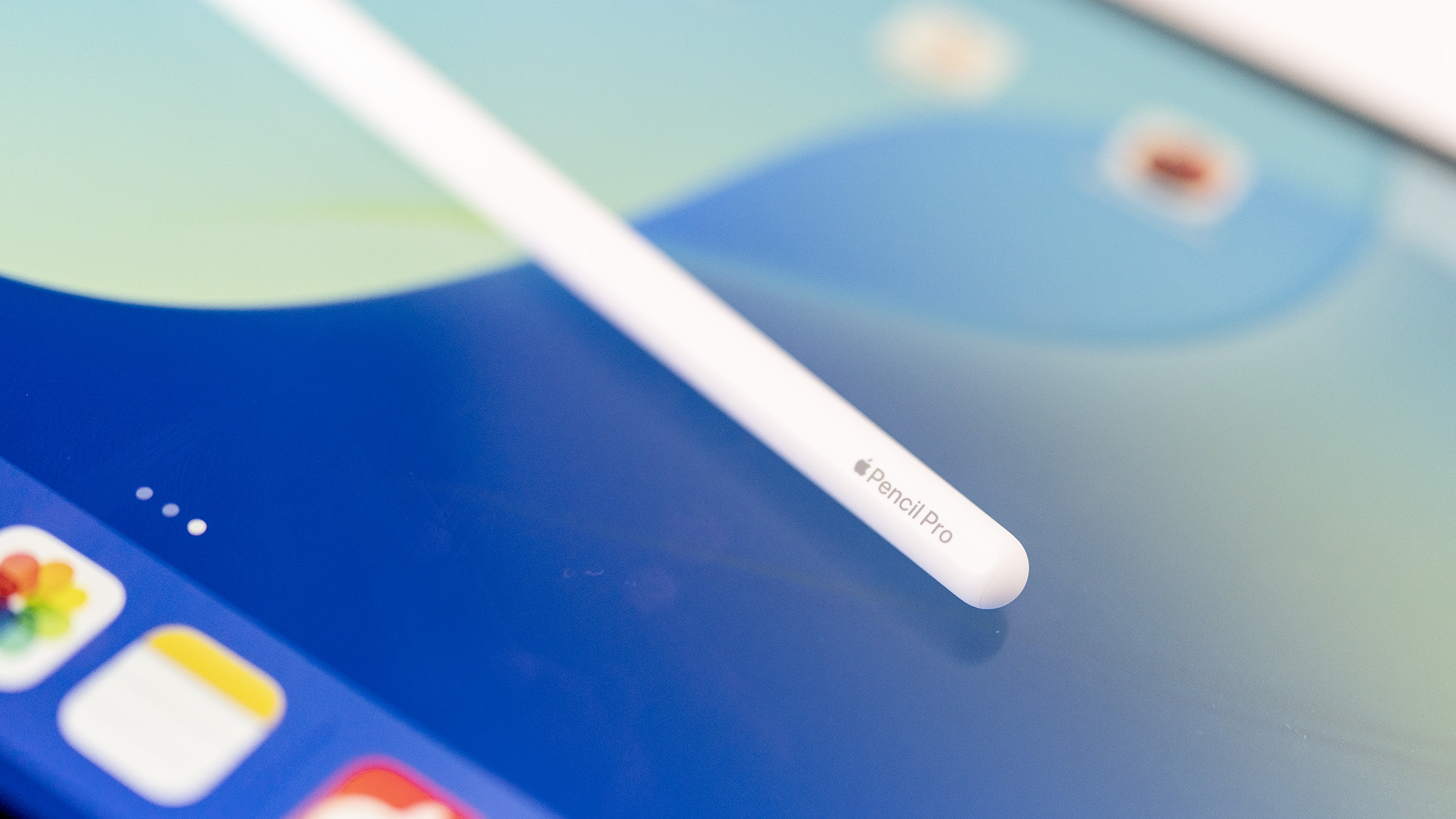
- You want a versatile, powerful tablet
- You can work with the apps available
- You appreciate the touchscreen and Pencil
Don't buy it if...
- You really need a laptop
- You need an unsupported app (like InDesign)
- A 13in screen isn’t big enough
Also consider
An exceptional Android tablet that caters to creative professionals. It has a premium price tag which makes it hard to recommend for casual users, but a ton of great features (including Galaxy AI) combined with powerful performance that justify the spend for those who can afford it.
The most compact member of ASUS' newly retooled ProArt family, the PZ13 is a unique proposition: a Snapdragon-powered 2-in-1 for creative pros on the go. It combines refinement and ruggedness in a unique way, too, and as we've grown to expect from ASUS, the screen is brilliant for any number of creative pursuits.
Why not choose a proper laptop instead of a tablet? The Windows-powered A14 is so close to being a MacBook Air that it’s even possible to see the resemblance between the names A14 and Air, and most of the time it puts on an impressive showing, but the Snapdragon GPU lets it down.
out of 10
The iPad Air M3 is an iPad Pro in all but name, and is compatible with both the Apple Pencil Pro and its non-Pro sibling. It’s supremely versatile, able to act as a laptop replacement for when you need to do office work, and a sketching pad when you don’t. It runs pro-level apps, though the selection is a bit limited, and though iPadOS has its shortcomings compared to a full-blown Mac, if you can work around them it makes an ideal everyday companion.

Ian Evenden has been a journalist for over 20 years, starting in the days of QuarkXpress 4 and Photoshop 5. He now mainly works in Creative Cloud and Google Docs, but can always find a use for a powerful laptop or two. When not sweating over page layout or photo editing, you can find him peering at the stars or growing vegetables.
You must confirm your public display name before commenting
Please logout and then login again, you will then be prompted to enter your display name.
